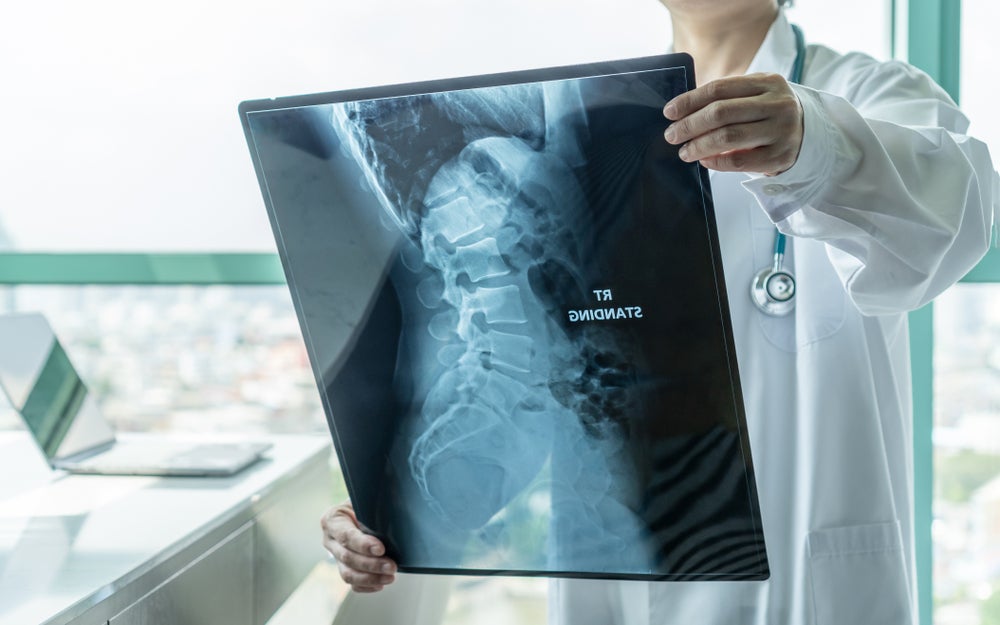A key theme from the spinal muscular atrophy (SMA) presentations at the American Academy of Neurology (AAN) 2024 Annual Meeting is the need for early diagnosis and treatment intervention in patients.
Initiating pharmacological treatment during the presymptomatic stages of SMA, prior to the onset of symptoms, could help patients achieve normal childhood developmental milestones.
SMA is characterised by a loss of lower motor neurons in the spinal cord, resulting in progressive muscle weakness and functional decline, including muscle wasting (atrophy) and low muscle tone (hypotonia) that is more commonly observed in the proximal muscles such as the shoulders, hips, and back.
Neurons controlling most voluntary muscles such as those involved in feeding, swallowing, and breathing can also be affected.
The availability of disease-modifying therapies, Biogen’s Spinraza, Roche’s Evrysdi, and Novartis’ curative gene therapy Zolgensma, have greatly improved disease outcomes for patients with SMA.
See Also:
However, early treatment is essential to increase the amount of survival motor neuron (SMN) proteins and prevent progressive motor neuron loss.
How well do you really know your competitors?
Access the most comprehensive Company Profiles on the market, powered by GlobalData. Save hours of research. Gain competitive edge.

Thank you!
Your download email will arrive shortly
Not ready to buy yet? Download a free sample
We are confident about the unique quality of our Company Profiles. However, we want you to make the most beneficial decision for your business, so we offer a free sample that you can download by submitting the below form
By GlobalDataAt the AAN 2024 ‘Emerging Therapies in Child Neurology’ presentation, Roche presented data from its Phase II RAINBOWFISH trial, which investigated the efficacy and safety of once-daily oral Evrysdi in infants ages birth to six weeks who have been genetically diagnosed with SMA but are presymptomatic, as they were not yet presenting with symptoms.
The trial included 26 patients with either two or more copies of SMN2, and the median age at which patients were first dosed with Evrysdi was 25 days.
The study reached its primary endpoint at month 12, as 80% of patients with two SMN2 copies and baseline compound muscle action potential (CMAP) amplitude ≥1.5mV were able to sit without support for up to five seconds.
Additionally, seven out of eight patients with two SMN2 copies were able to sit without support for up to 30 seconds, including all infants with CMAP amplitude <1.5mV.
The majority of patients reached near-maximum Children’s Hospital of Philadelphia Infant Test of Neuromuscular Disorders scores, indicating good motor function.
Assessment using the Hammersmith Infant Neurological Examination, Module two, Section 2 found that of the 26 patients with either two or more copies of SMN2, 24 patients were able to sit without support, 21 patients were able to stand, and 16 patients were able to walk.
All patients maintained bulbar function and did not require permanent ventilation after 12 months of Evrysdi treatment.
Furthermore, following 12 months of Evrysdi treatment, patients demonstrated cognitive skills typical of normal child development, as measured by the Bayley Scales of Infant and Toddler Development Cognitive Scale, Third Edition.
There were no adverse events (AE) that led to treatment withdrawal or discontinuation of Evrysdi, and the majority of AEs were considered reflective of the age of the infants rather than the underlying SMA symptoms.
The study provides additional data on the efficacy and safety of Evrysdi in infants with presymptomatic SMA.
Key opinion leaders (KOLs) previously interviewed by leading data and analytics company GlobalData stated that early diagnosis to allow prompt treatment initiation is one of the main environmental unmet needs in SMA management.
KOLs stated that initiating treatment early in the disease can improve treatment outcomes.
They revealed that the rarity of the disease is a factor that results in delayed diagnosis.
The widespread adoption of newborn screening (NBS) initiatives is expected to help with the earlier diagnosis of SMA, although such implementations vary geographically and are just beginning to roll out in some of the countries in the seven major pharmaceutical markets (US, France, Germany, Italy, Spain, UK, and Japan).
At the AAN 2024 ‘Health Care Disparities: Movement, Neuromuscular, MS, and Headache’ poster session, Armengol and colleagues presented a study that surveyed healthcare providers regarding the availability of NBS and the accessibility of SMA pharmacological treatments across different regions globally.
The study found differences in the European countries.
For example, NBS was reported to be available in Germany, but it is not available in France, Spain, or the UK.
In 2018, SMA was added to the Recommended Uniform Screening Panel in the US.
Armengol and colleagues noted that there are regional access limits for NBS for SMA within the US and other countries, including Australia, Brazil, Canada, and Japan.
Furthermore, although genetic testing is usually available across the 21 surveyed countries, NBS is only available in eight of them.
The presentation highlighted that the widespread adoption of NBS is an imperative first step in improving the prescription of SMA pharmacological treatments.
The European Alliance for Newborn Screening in SMA is striving for the implementation of NBS programmes in all European countries by 2025, as this could detect presymptomatic SMA cases and enable timely treatment interventions.
Based on interim findings from the RAINBOWFISH trial, Evrysdi received label extensions from the FDA in May 2022 and from the European Medicines Agency in August 2023 for the use of Evrysdi in patients aged under two months with SMA.
However, the widespread adoption of NBS for the early diagnosis of SMA and timely initiation of pharmacological treatment such as during the presymptomatic stage of the disease, is imperative to help patients achieve sitting without support, standing, and walking motor milestones.










Related Company Profiles
Biogen Inc
Roche Diagnostics International Ltd
Novartis AG